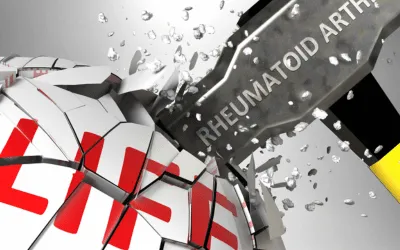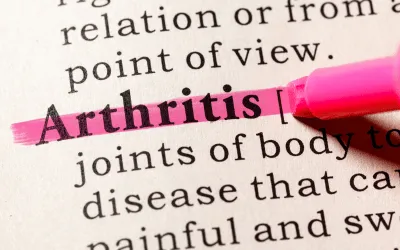About Arthritis
As the nation’s #1 cause of disability, arthritis affects nearly 60 million adults and 300,000 children. Over 100 types of arthritis and related conditions damage the joints and often other organs.
How can we assist you?
Helpful Tools for You

Breakthrough Treatments for Arthritis and Chronic Pain: How RFA and TAE Are Changing Lives
Living with arthritis or chronic pain can feel overwhelming. Simple tasks become difficult, and daily life is interrupted by constant discomfort. But what if there were innovative treatments available that didn’t require major surgery and could offer real, lasting relief? At the American Arthritis Foundation, we are excited to share news about two minimally invasive procedures that are revolutionizing arthritis and chronic pain management: Radiofrequency Ablation (RFA) and Transcatheter Arterial Embolization (TAE).
What Is Radiofrequency Ablation (RFA)?
Radiofrequency Ablation, or RFA, is a cutting-edge treatment that uses targeted heat to deactivate the nerves responsible for sending pain signals to the brain. By reducing or stopping these pain signals, RFA offers significant relief for those struggling with chronic pain. Whether you’re dealing with arthritis in your knees or ongoing sacroiliac joint pain, RFA provides a new way to take control of your pain.
Imagine being able to reduce the severity of your pain without undergoing major surgery—no long recovery times or hospital stays! With RFA, many patients experience noticeable pain reduction in just a month, along with improved physical function over time. You can move better, feel better, and reclaim your quality of life.
What Is Transcatheter Arterial Embolization (TAE)?
TAE is another minimally invasive procedure that offers hope to those living with chronic arthritis pain. This treatment works by reducing blood flow to inflamed areas in your joints, which in turn leads to significant pain relief and improved joint function. For those who haven’t found relief from traditional treatments or aren’t candidates for surgery, TAE provides a powerful alternative.
Like RFA, TAE does not require extensive surgery, making it an appealing option for people seeking effective pain management without the complications of invasive procedures. Many individuals report feeling less pain and seeing improvements in mobility and overall joint health after TAE.
Key Benefits of RFA and TAE
The benefits of both RFA and TAE are clear and exciting:
Minimally invasive: No major surgery is required, making recovery quicker and easier.
Fast pain relief: Many patients report reduced pain in just one month after the procedure.
Improved physical function: These treatments help patients move better, improving overall quality of life.
Ideal for those not eligible for surgery: If traditional surgical options are off the table, these procedures offer an effective alternative.
Who Can Benefit from These Treatments?
RFA and TAE are excellent options for individuals suffering from conditions like osteoarthritis in the knees, sacroiliac pain, or chronic arthritis in other joints. If you haven’t found relief from medications or other therapies, or if surgery isn’t an option for you, these procedures might be the solution you’ve been looking for.
The ability to get back to doing the things you love without constant pain is invaluable. Whether it’s enjoying time with family, participating in hobbies, or simply being able to move freely, RFA and TAE can give you back control of your life.
Here’s to living life pain-free and on your own terms. Don’t let arthritis or chronic pain hold you back any longer—there are effective solutions available, and they’re making a real difference in people’s lives.
Effects of Arthritis

Cause of Disability
In the United States, 23% of all adults, or more than 54 million people, have arthritis. It is a leading cause of work disability, with annual costs for medical care and lost earnings of $303.5 billion.

Workforce Effects
Sixty percent of US adults with arthritis are of working age (18 to 64 years). Arthritis can limit the type of work they are able to do or keep them from working at all.

Global Impact
In fact, 8 million working-age adults report that their ability to work is limited because of their arthritis. For example, they may have a hard time climbing stairs or walking from a parking deck to their workplace.
Promoting Interventions That Reduce Arthritis Pain
American Arthritis Foundation recognizes several proven approaches to reduce arthritis symptoms:
Be active. Physical activity—such as walking, bicycling, and swimming—decreases arthritis pain and improves function, mood, and quality of life. Adults with arthritis should move more and sit less throughout the day. Getting at least 150 minutes of moderate-intensity physical activity each week is recommended.
Protect your joints. People can help prevent osteoarthritis by avoiding activities that are more likely to cause joint injuries.
Talk with a doctor. Recommendations from health care providers can motivate people to be physically active and join a self-management education program. Should your arthritis be interfering with your activities of daily living you may be a candidate to receive many new treatments, and learn how to reverse the arthritis condition.
Have a question?
We're Here to Help
By providing my phone number, I agree to receive text messages from the business.


